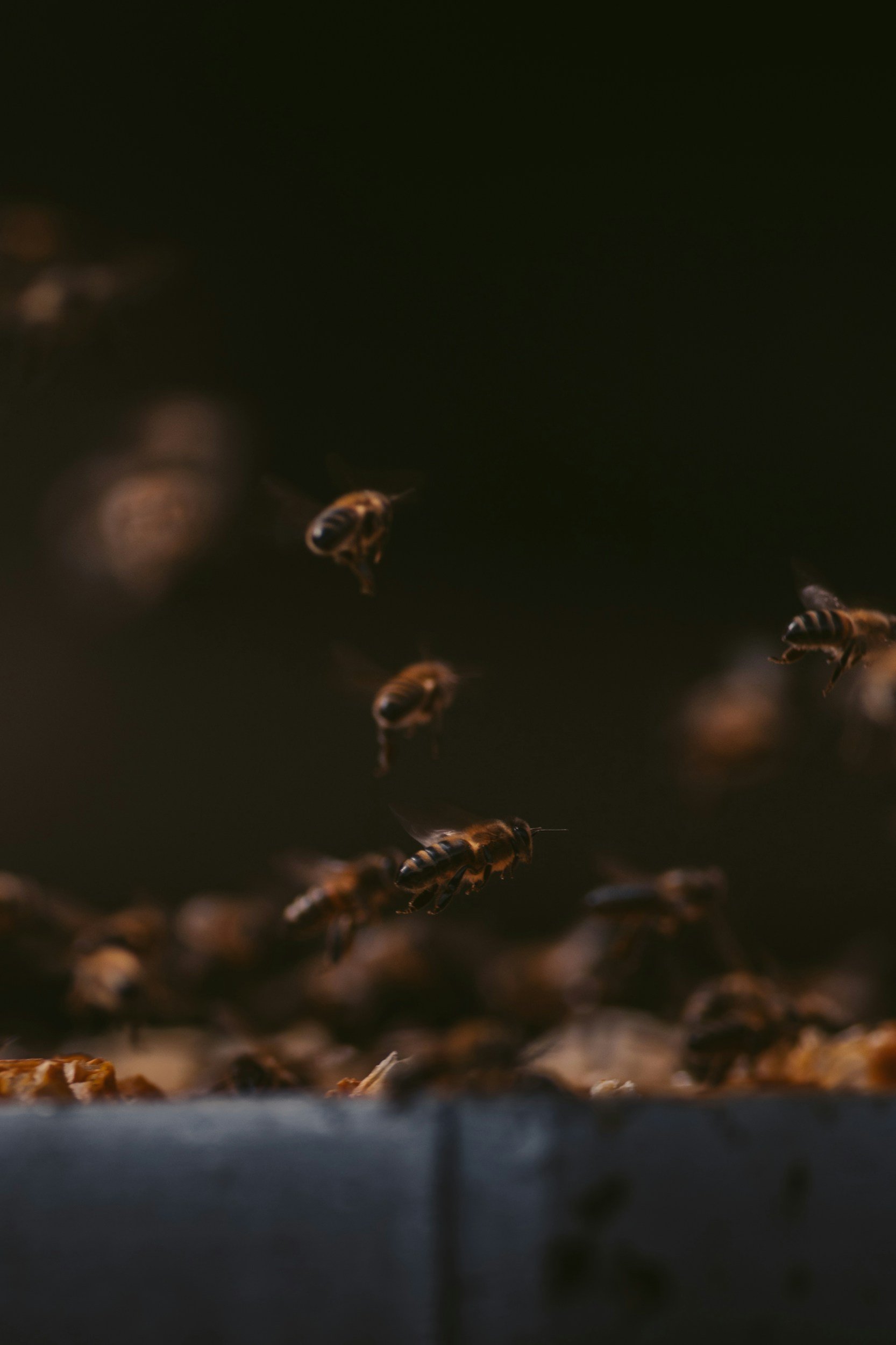
Varroa destructor
What is Varroa?
The Varroa mite (Varroa destructor) is a highly destructive external parasite that feeds on honeybees. Originating from Asia and native to the Asian honeybee (Apis cerana), it expanded to the rest of the world in the last 40 years and shifted hosts to the European honeybees (Apis mellifera), becoming the most serious threat to beekeeping.
The mite attaches to the bee's body and feeds on its fat body tissue, weakening the bee. It also acts as a vector for several harmful viruses, further endangering bee health. Varroa mites primarily target the brood (larvae and pupae), where they reproduce, but can also parasitize adult bees.
Effect on Honeybees
As the Varroa mite population grows in a hive, the health and function of the colony begin to suffer:
Colony Weakening
A small number of Varroa mites might not cause much damage, but as the mite population increases, it weakens the entire colony. The infestation disrupts brood development, bee reproduction, and foraging abilities, eventually leading to colony collapse.
Transmitter of Viruses
Varroa acts as a multiplier of viruses, such as Deformed Wing Virus (DWV) or Acute Bee Paralysis Virus (ABPV) and many others. 20 years ago, colonies were able to deal with relatively high Varroa numbers, however, recent research shows that colonies nowadays collase at much lower mite levels due to the increased virus load they carry.
Reduced Reproduction
Infested colonies produce fewer drones, and the drones that survive are often too weak to mate, reducing the colony’s ability to reproduce and swarm. This speeds up the collapse of the hive.
Brood Health / Parasitic Mite Syndrome
Varroa can disrupt brood patterns, causing signs that resemble foulbrood diseases. Frequent symptoms include a reduced bee count, dead or deformed brood and chewed cappings. The colony also becomes less effective at foraging and defending itself, making it more vulnerable to other dangers.
Varroa’s Lifecycle
The Varroa mite’s lifecycle starts when a female attaches to an adult bee and enters the phoretic stage. In this stage, the mite feeds on the bee’s bodily fluids and moves between colonies, traveling with the foraging bees. The mite is vulnerable during this time and can only survive for a few days unless there is brood to sustain it.
When the mite finds a brood cell, it enters the reproductive stage (brood infestation). It feeds on the larva and lays eggs, starting with a male followed by several female eggs. The female mites mate with the male and, when the bee emerges, they leave the cell to start the cycle again, rapidly spreading within the colony.
During colder months, the mites can survive on adult bees without feeding, allowing them to endure until brood reappears. This rapid reproduction and the mites’ ability to survive in different conditions make infestations grow exponentially.
How to Identify Varroa
To identify Varroa mites, beekeepers must regularly inspect their hives. Most popular methods are the use of sticky boards to count the natural mite fall, and the powdered sugar shake or the alcohol wash.
Adult female mites are oval, flat, and red-brown, measuring about 1.1 mm long and 1.6 mm wide. Male mites are smaller and lighter in color compared to females, and juvenile mites are even smaller and lighter. These mites can be found on larvae, pupae, and adult bees. Regular monitoring is key to early detection and control of Varroa infestations.
Current Treatment Methods
Without Varroa mite control, a bee colony will die within one to three years. Therefore, honeybees rely on Varroa management. Here are the main methods currently used:
Chemical Treatment (Miticides)
Synthetic Chemicals like Amitraz and Coumaphos are commonly used but can be harmful to bees, especially as resistance develops and chemicals accumulate in beeswax.
Organic Chemicals like thymol, formic acid, and oxalic acid are less toxic but still pose risks, including increased bee mortality and reduced colony development.
Thermal Treatment (Hyperthermia)
Thermal treatments use heat to target Varroa mites, taking advantage of honeybees' ability to tolerate higher temperatures than the mites. When heat is applied at 42 °C for three hours, the mites die while the bees survive.
Previous solutions include hive heaters with the problem of high temperature gradients and reduced effectiveness, and external heat chambers that make the applications extremely time-consuming.
Lifehive, in contrary, uses internal heat treatment in a fully automated manner. Learn more
Biomechanical Control
Drone Brood Removal involves raising and removing drone brood, where Varroa mites are more common. While effective, it can impact the colony's genetics, or even act as a Varroa multiplier if removed to late.
Queen Caging is a method to reduce all the brood in a hive to one single frame, that should act like a Varroa trap, but it's time-consuming and will slow the colony's growth.
Varroa Resistance Breeding
Breeding honeybees with natural resistance, like grooming and hygienic behavior, provides a long-term solution, but it takes time and still requires other treatments in the short term.
Ongoing Research
Research into sex pheromones, book scorpions, and fungi may offer future solutions, but their effectiveness and safety are still being evaluated.
Chemical Treatment with Oxalic Acid
Act now
The problem is obvious, and Lifehive is the solution.






